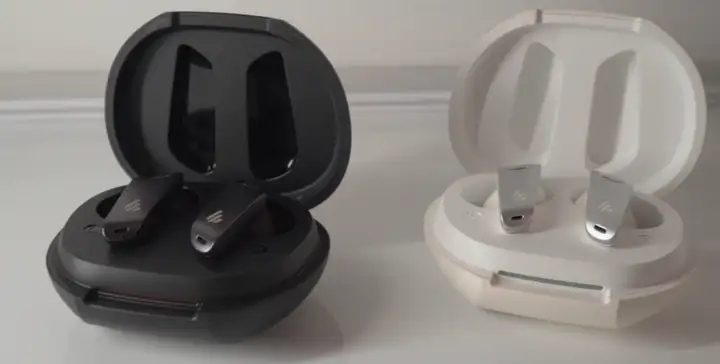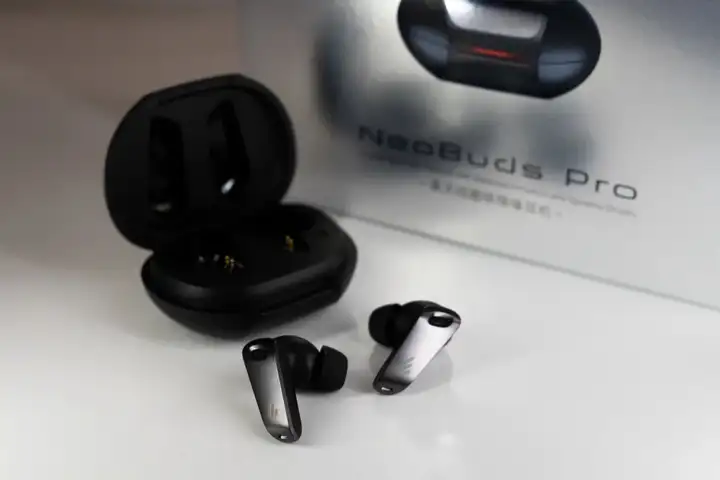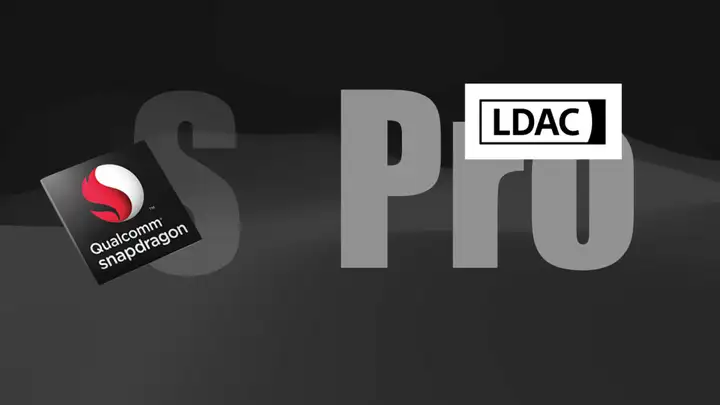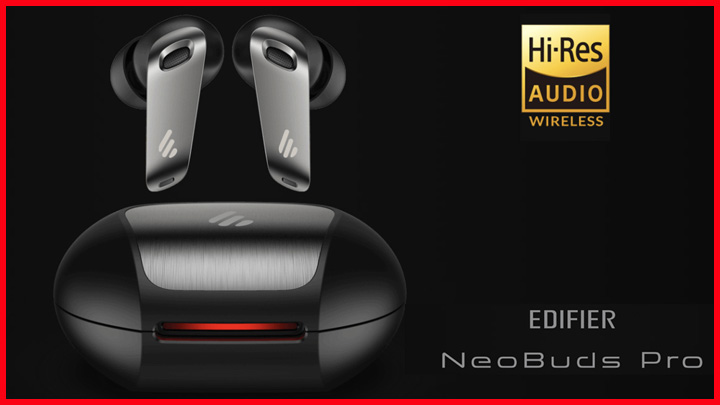This is actually a late content. A year ago, I did a comprehensive evaluation of Edifier neobuds pro. If you haven’t watched that video, you might as well click back and take a look.
In the comment area and private messages, the most common question is, how should I choose between NeoBuds S and NeoBuds Pro?

It’s time to answer this question.
Let’s take a closer look at the Edifier NeoBuds Pro product and the differences between the Pro and S in this series. Finally, let’s talk about what should we pay attention to when choosing Bluetooth noise-cancelling headphones?

By the way, everyone has watched “The Wandering Earth 2”. The earphone props in the movie were designed by Edifier.
sound quality
The first is the Hi-Res gold standard. We have said this many times. This is a coding standard that can transmit high-resolution audio.
When evaluating whether the sound quality of a headset is good or not, we often forget two prerequisite factors, one is the quality of your audio file, and the other is the efficiency in the transmission process. The file is easy to resolve, there are many Hi-Res music downloads available online. The second is transmission. If the encoding standard with a very low sampling rate is used for transmission, no matter how good the sound quality of the file is and how powerful the hardware of the headset is, it will not be able to show its full strength. Isn’t it a waste?
This is what Hi-Res is about.
For example, if you watch videos on the same 4K TV, can the resolution of 720P achieve the same look and feel as 4K?
Of course, the encoding gap between high-definition audio is not as obvious as that of video images. You need to listen carefully. However, once you get used to high-definition audio encoding and go back to using SBC, you can actually feel the gap.
If your phone supports LDAC, you can see such an LDAC logo after connecting a Bluetooth headset. At present, LDAC has joined the open source code of Android, so in theory, if you have an Android phone, you can use LDAC normally.
Dual-unit design
NeoBuds Pro uses a dual-unit design of moving iron and moving coil. The bass part is taken care of by the moving coil unit, and the tweeter unit is taken care of by Knowles moving iron speakers. Coupled with active electronic crossover technology, the overall sound quality will not be bad. I have explained this active electronic crossover technology before. When our songs or music contain rich high, middle and low frequencies, if there is only one sound unit, it will be difficult to cover everything. Compromise solutions will only make the bass unable to sink in, or the high frequencies unable to come up, or your headphones are very special and are only suitable for listening to a certain type of music.
It’s difficult to solve a problem with a single sound-generating unit, so wouldn’t it be enough to use two sets of circuits, one for medium and low frequencies, and one for high frequencies, processed separately, and targeted optimization, so that we can take care of both.
Active electronic frequency division is based on this idea. If you know photography, you will find that the dual native ISO Fusion super dynamic technology is very similar to this idea.
After talking about a lot of paper explanations, as for the actual sound quality performance, let’s listen to it together and compare it with NeoBuds S.
Noise reduction
Many friends must be very clear about the principle of headphone noise reduction. Here is an explanation for newbies. The principle of active noise reduction of Bluetooth headsets is actually relatively simple. It uses the built-in microphone on the headset to monitor the external environmental noise and Generates an opposing sound wave, thereby canceling out external noise. This sound wave that is opposite to the environmental noise is called “reverse-phase sound wave”. By mixing it with the original sound through active mixing technology, the external noise can be greatly reduced, thereby achieving the noise reduction effect.
But another question arises, where is the appropriate place to place this noise-cancelling microphone?
If placed outside, this is called a feedforward microphone, which only accepts sound outside the earmuffs. It will detect external noise and generate an opposite signal. This signal will cancel out the noise, thereby reducing interference from external noise. However, this will cause serious wind noise problems.
Microphone
Put it inside, this is called a feedback microphone. Since it is inside, there is naturally no wind, and the earphones will detect the user’s auditory perception through the built-in microphone and other sensors, and fine-tune the sound waves according to the user’s feelings to achieve the noise reduction effect. More suitable for the user’s listening experience. But because the microphone is too close to the speaker, it will cause a problem of howling. What is howling? This is it.
So why not put one inside and one outside? Yes, this is how the hybrid noise reduction mode works, so as to achieve better noise reduction effect.

Edifier NeoBuds Pro has a noise reduction depth of -42dB.
Let’s actually experience the noise reduction effect.
In my experience, it performs very well in both subways and buses, and can suppress noisy environmental noise very well. Many times, even if I am not listening to music, I will wear headphones.
Active noise reduction microphones
In addition to these two active noise reduction microphones, NeoBuds Pro also adds a call microphone, mainly to enhance the human voice.
Let’s do a small experiment. First there is a noisy background sound, and then there is a gust of wind. Let’s take a look at the actual noise reduction performance of this headset.
In terms of battery life, when using the noise reduction mode, it can achieve five hours of battery life. With the charging box, it can achieve 20 hours of battery life. If you use it for two or three hours a day, it can be use for about a week.
In normal mode, 24 hours of battery life can be achieve.
However, for the sake of hearing health, it is better not to wear headphones for a long time.
Latency, tested using our old method, is about 80-90ms. There is no problem when playing mobile games. Compared with NeoBuds S, it is better and has lower latency.
Finally, let’s answer the question at the beginning, how to choose between NeoBuds Pro and NeoBuds S?
In fact, from the perspective of sound quality and noise reduction, both perform very well. In fact, an important factor in choosing which headset to choose is what device you are currently using to listen to music.
If your phone is powered by Qualcomm Snapdragon chip, supports Snapdragon Listen, and supports APTX, then I will recommend you NeoBuds S without hesitation;
If you use a mobile phone with other chips, or use a computer more, or your device supports LDAC, then NeoBuds Pro is also a good choice.
LADC or APTX
But if you are using an iPhone that does not support LADC or APTX, then the choice between these two is almost the same for you.

Of course, there are some subtle differences. For example, the latency performance of NeoBuds Pro is better than that of NeoBuds S. The color of the lighting in the charging compartment of NeoBuds S can be freely configure.
Of course, there is also a price difference. Currently, NeoBuds Pro is about 100 yuan cheaper than NeoBuds S.





2 thoughts on “What exactly is Pro? Edifier neobuds pro hands-on experience”